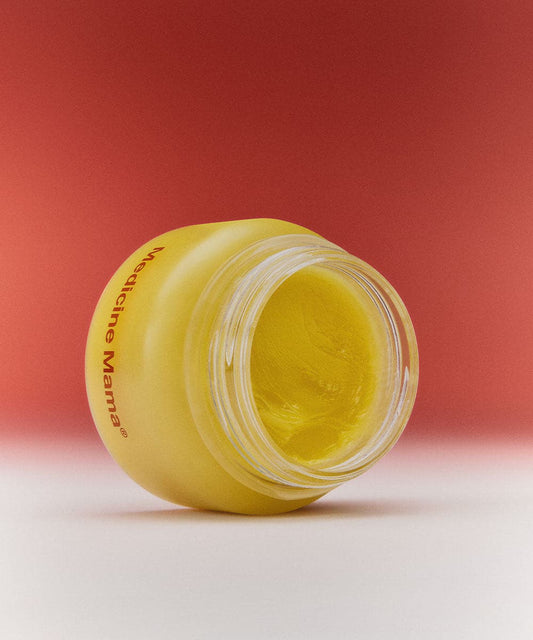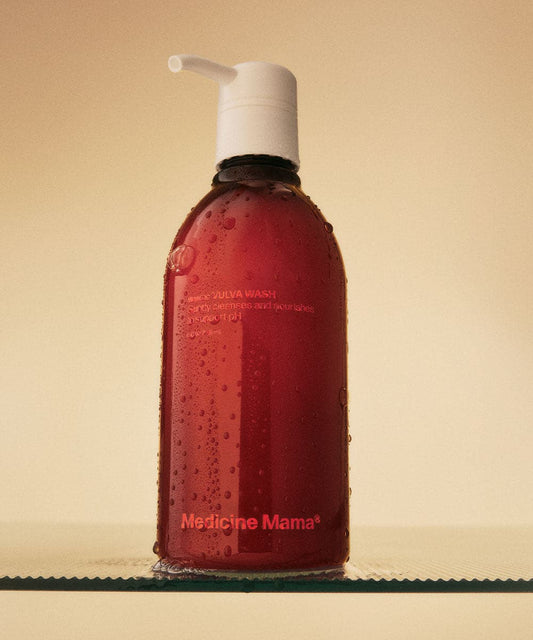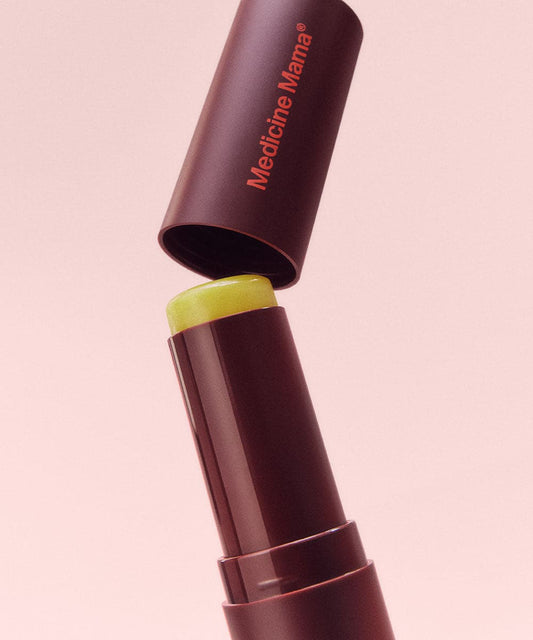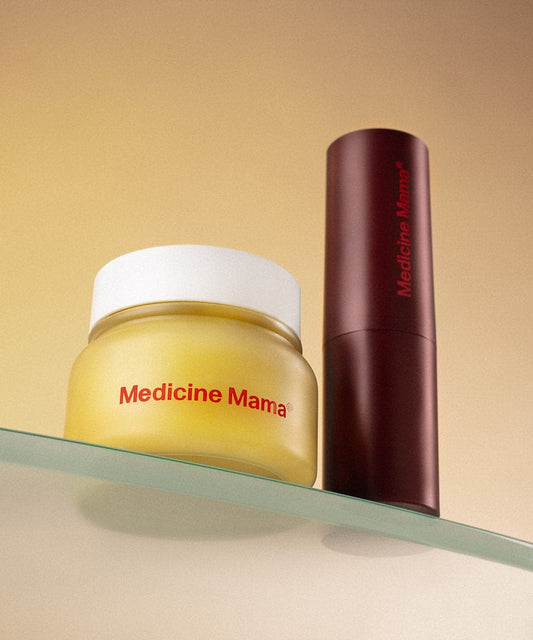
Reviewed by | Melinda (Melle) Hany, RN, ADN Registered Nurse
There’s a lot that nobody tells you about menopause. One day, your vulva feels totally fine, and the next, it’s like your body rewrote the manual without looping you in.
You start noticing dryness, discomfort, maybe even irritation, while doing things that never used to bother you. You’re trying to keep up with everything else in life — work, sleep, relationships — and suddenly, you're Googling things like “vaginal estrogen side effects” at 2 a.m.
We hear it all the time: “Is this normal?” “Why didn’t my doctor explain this better?” “What are my actual options?” We get it. It’s confusing, it can feel awkward to ask about, and too many of the solutions out there either overpromise or completely miss the point.
That’s why we’re breaking down what to expect with vaginal estrogen and what non-hormonal options are actually worth your time. “Menopause doesn’t have to continue to be a mystery or a dirty subject,” says Melinda Hany, Registered Nurse.
What Is Vaginal Estrogen, and Why Is It Prescribed So Much?
Vaginal estrogen is exactly what it sounds like — a small dose of estrogen applied directly to your vulva or vagina. It usually comes in the form of a cream, ring, tablet, or insert. Unlike hormone therapy that affects your whole body, this kind stays local. It’s meant to support the exact area where estrogen has dropped off, without sending it everywhere else.
It’s commonly prescribed during or after menopause, especially when you’re dealing with dryness, irritation, or discomfort during sex or daily life. That drop in estrogen can make vaginal and vulvar tissue thinner, less stretchy, and more sensitive.
Vaginal estrogen helps by supporting that tissue and helping it feel more like itself again. It doesn’t work for everyone, but for a lot of women, it can make a noticeable difference in comfort and quality of life.
What Are the Side Effects of Vaginal Estrogen?
Like with any treatment, some people experience side effects. Most are mild and manageable. Others might be enough to make you rethink the whole thing.
Here’s what to know and what you can do.
Irritation or Itching
Even though vaginal estrogen is designed to help with dryness and discomfort, some people notice the opposite at first — a little more itching, stinging, or general irritation than they expected.
Why? That vulvar tissue is often already sensitive from hormonal shifts, and introducing a new product (even one meant to help) can cause a temporary reaction while your body adjusts.
It can also be a sign that the dose is too strong, or that something in the formula just isn’t vibing with your skin. If it feels like it’s getting worse or not letting up, it’s definitely worth bringing up with your doctor — your vulva deserves better than “just deal with it.”
Hany notes that “It’s also possible to have a local allergy to something other than the estrogen, so don’t be afraid to reach out!”
Spotting or Light Bleeding
This one catches a lot of people off guard, especially if you haven’t had a period in a while. You start using vaginal estrogen, and then suddenly, you’re seeing light spotting.
It’s usually nothing serious. That tissue hasn’t had estrogen in a bit, so reintroducing it can cause some light bleeding as your body adjusts. Think of it like your skin rehydrating after being super dry; sometimes, there’s a little turbulence while things rebalance.
Still, it’s worth mentioning to your doctor. It doesn’t mean estrogen is off the table, but it might mean adjusting your dose or trying a different delivery method that works better for your body.
Discharge
Lastly, more discharge. Sometimes, it’s the product itself coming back out, and sometimes, it’s your body responding to the change in hormone levels.
It’s usually clear or white and doesn’t smell. If it’s not irritating or accompanied by itching or burning, it’s probably just your body adjusting. But if something feels off, like the color changes or you start noticing a strong scent, it’s worth flagging with your provider.
Are There Non-Hormonal Options That Actually Work?
Everyone’s body reacts differently. What helps one person feel normal again might leave someone else feeling off. If vaginal estrogen ends up giving you more side effects than relief, that doesn’t mean you’re out of options.
There’s a lot you can do that doesn’t involve hormones, and plenty of women go this route from the start.
- First, simplify. Avoid anything fragranced, anything too foamy, and definitely anything that says “for your delicate area” but won’t even name the vulva. A gentle, fragrance-free wash that supports pH balance, like VMAGIC® Vulva Wash, is a good place to start. It cleans without stripping the skin or making dryness worse.
- Second, hydrate. Drinking more water helps, but so does using a vulva moisturizer regularly. If you’ve never tried one, our VMAGIC® Vulva Balm is a great option. It’s hormone-free, made with organic ingredients, and designed for daily use on sensitive vulvar skin. You can use it after a shower, before bed, or anytime things just feel dry or uncomfortable.
- Third, groom with care. If grooming’s part of your routine, adding a gentle polish like VMAGIC® Grooming Polish can help smooth the skin and cut down on irritation. Think less razor burn, fewer bumps, and a little more comfort post-wax or shave.
- Finally, pay attention to your underwear. Cotton is your friend. So is skipping underwear at night. Sweat, synthetic fabrics, and tight leggings can trap moisture and make everything feel worse.
None of these are magic fixes, but they add up. And when your vulva feels better, you feel better. That’s reason enough to rethink the routine.
Tips To Support Vaginal Health
We’ve talked about what vaginal estrogen is, covered the side effects, and even walked through solid non-hormonal options. But what else can you actually do to support your vaginal health day to day?
If you’re looking to feel more balanced and less reactive down there, consider these tips.
Eat With Your Microbiome in Mind
What you eat affects more than your gut — it can influence your vaginal microbiome, too. A diet that includes fermented foods like plain yogurt, kefir, kimchi, and sauerkraut can support healthy bacteria. Leafy greens, berries, and foods rich in omega-3s (like salmon or flaxseeds) are also great.
And don’t forget fiber, which helps your body flush out excess hormones. You don’t need a new meal plan, just small tweaks that help everything run smoother.
Move Your Body
Regular movement (think: walking, stretching, yoga, anything) can help support circulation and pelvic floor health, which both play a role in how your vulva and vagina feel. You don’t have to go full boot camp; just getting up and moving more throughout the day can help with blood flow, muscle tone, and comfort.
Find Ways To Relax
Stress isn’t always obvious, but your body feels it. It can throw off your hormone levels, disrupt your sleep, and even affect how comfortable your vagina and vulva feel. If things are feeling extra tense or off, it’s worth asking if your nervous system needs a break.
That could mean journaling, stepping away from screens, getting outside, or finally booking that pelvic floor therapy session you've been putting off. What matters is that you give your body some space to reset. It adds up.
The Wrap-Up
At Medicine Mama, we know menopause doesn’t come with a clear set of instructions and that navigating vaginal health shouldn’t be this confusing. Whether you’re weighing the pros and cons of vaginal estrogen or looking for gentle, non-hormonal ways to feel more comfortable, we’re here for it.
Our products are made to support your vulva with clean, clinically tested care because you deserve to feel good in your body every day.
Sources:
By the way, doctor: Is vaginal estrogen safe? | Harvard Health
New Possibilities for Hormonal Vaginal Treatment in Menopausal Women | PMC
Estrogen Vaginal | MedlinePlus Drug Information
Effects of Dietary Quality on Vaginal Microbiome Composition | PMC



